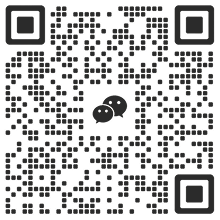After Bitcoin broke through the $100,000 mark, driven by the market recovery pump, here are 10 hot narratives that may break out at any time:
- Modularity;
- Inscriptions and runes;
- Ethereum layer2;
-Restaking;
- Bitcoin layer2;
-intent centric;
- Chain abstraction;
-AI+;
-zkVM;
-PayFi;
If you were to rank the popular narratives above, which one do you think would recover first?
1) Modular expansion -> ignited the business expansion prospects of DA, AltVM, shared sequencer, decentralized storage, etc. -> trapped in the capital quagmire of severe infra homogeneity, high FDV and generally bearish market;
2) Ordinals inscription (inscription, rune) -> became the "diversified" innovation singularity of assets issued on Bitcoin -> trapped in the dilemma of no "empowerment" due to the abundance of assets and the mess after Fomo;
3) Ethereum Layer2 -> From Plasma, Validium to Rollup paradigm dispute, and then to Rollup layer2 standard dispute (OP/ZK), specification debate (orthodoxy), TPS dispute, Compatible standard (type0, 1, 2, 4), RaaS (one-click chain launch) -> Criticized infra > application for not being able to effectively transfuse Ethereum;
4) Restaking (re-staking) -> set off a wave of TVL farming points on the chain, bringing about the business model of AVS outputting security consensus -> trapped in the slow implementation of the AVS business closed loop, and the issuance of coins after the ecological points war overdrew expectations;
5) Bitcoin Layer2 --> Took over the second half of the Inscription Operation, introduced EVM- Compatible chain, isomorphic binding RGB++, ZK General bottom layer, Native cross-chain bridge, MoveVM, BTCFi related Stablecoin, lending and other DeFi infrastructure layout trends --> Trapped by too diverse technical specifications and still relying on DeFi, no BTC Specific application scenarios have been born;
6) Intent-centric -> It triggered a discussion on a new AI-driven trading paradigm, introduced a decentralized solver network, and stimulated a new trend of AMM on-chain market making -> Due to the early stage of AI Agent execution, the slicing requirements of the solver network are limited, and the chain abstraction infra is not yet complete, which cannot be converted into experience-level "intention";
7) Chain abstraction -> Driving the trend of "integration" such as infra, contract standards, and unified accounts with the goal of user experience, preparing to onboard more users -> Currently in the early stages of the market, it is criticized for being more conceptual than substantial, and needs a breakthrough in phenomenal applications;
8) AI Narrative (AI +) -> With its own huge user and business scenario demand of web2, the integration with Crypto has generated many narrative spaces such as decentralized cloud computing, distributed reasoning, DePIN, TEE, FHE, Blind Compute, AI Agent, etc. -> AI large models are not yet mature in the web2 field, and the demand for overflow to web3 is still too small, and it will take time;
9) ZK General-Purpose (zkVM) -> Taking advantage of the Trustless feature of ZK technology in messaging between homogeneous and heterogeneous chains, it can perfectly separate off-chain computing and on-chain verification scenarios, and then become the next-generation unified infrastructure that connects chains, applications, and liquidity -> Trapped by the fact that the technology is too "upstream", it requires a long time to explore and implement application scenarios;
10) PayFI (RWA related) -> Trying to break the separation between off-chain traditional business scenarios and on-chain basic infra, breaking through restrictions such as compliance and Mass Adoption, and introducing a steady interest-bearing demand for on-chain funds -> Trapped in the fact that the integration of compliance qualifications and business scenarios is not a one-day job, scattered soldiers are fighting, and it is difficult to form a scale effect in a short period of time;














